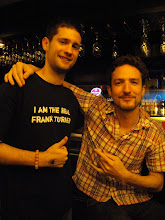This is an excerpt from an article in The Economist. February 28 - March 6 2009 issue, page 37.
The 2008 election did not just put a new president in the White House. It also completed one of the biggest shifts in the regional balance of power in America's recent history, draining influence away from the once-mighty South and redistributing it to the coasts...Equally striking is the social difference between the Californians and the southerners. Mrs. Pelosi, Mrs. Feinstein and Mrs. Harman are all married to wealthy businessmen - extremely wealthy in Mrs. Harman's case. Mrs. Pelosi's district, San Francisco, is a combination of a playground for the ultra-rich and a sewer for the underclass, with the middle classes priced out of the market. Mr. Waxman's district, West Los Angeles, is the glitziest concentration of wealth on the planet. The southerners, by contrast, were mostly men of modest means who represented middle-class suburbs, a world away from Pacific Heights, where Mrs. Pelosi lives, and Rodeo Drive, in the heart of Mr. Waxman's district.
The Californian Democrats’ agenda is the polar opposite of the southern Republicans’: pro-green and pro-union, anti-business and anti-war. Mr. Waxman and Mrs. Boxer have long outdone most of their party in supporting tougher environmental standards. As the architect of much of the anti-tobacco legislation of the 1990s, Mr. Waxman is casting around for new monsters to slay. (High on his list are energy companies.)
The Californication of the Democratic Party carries all sorts of risks. The most obvious is that California has the most dysfunctional politics in the country. The Golden State has one of the highest unemployment rates in America, at 9.3%, thanks to its high taxes, its unions, its anti-business climate and its gigantic housing bubble.

No comments:
Post a Comment